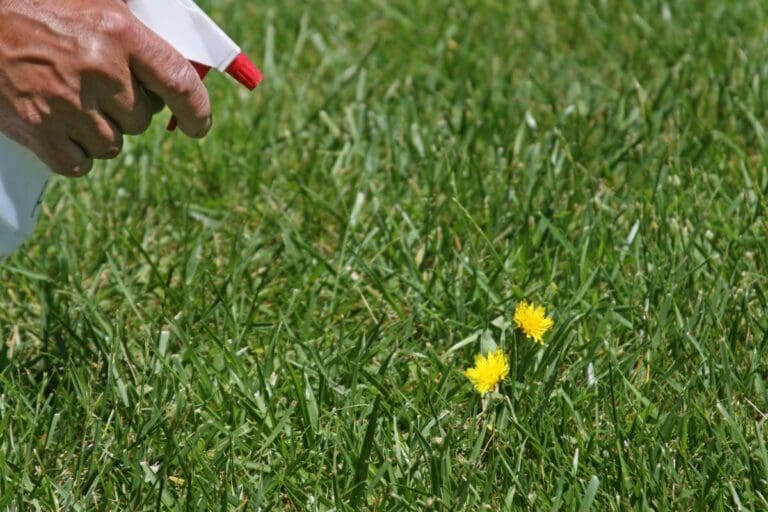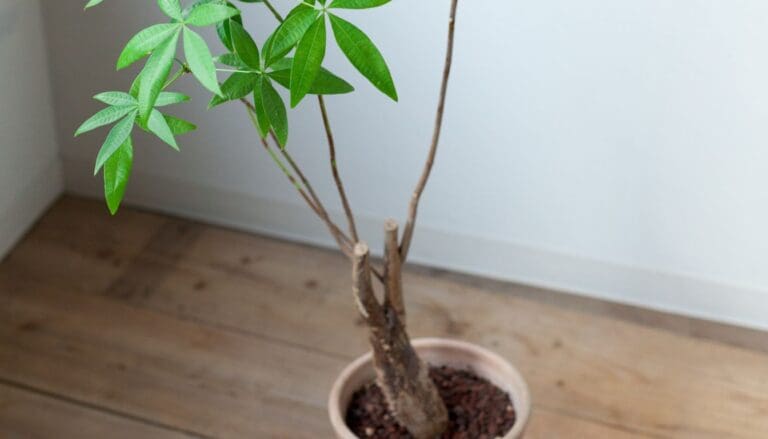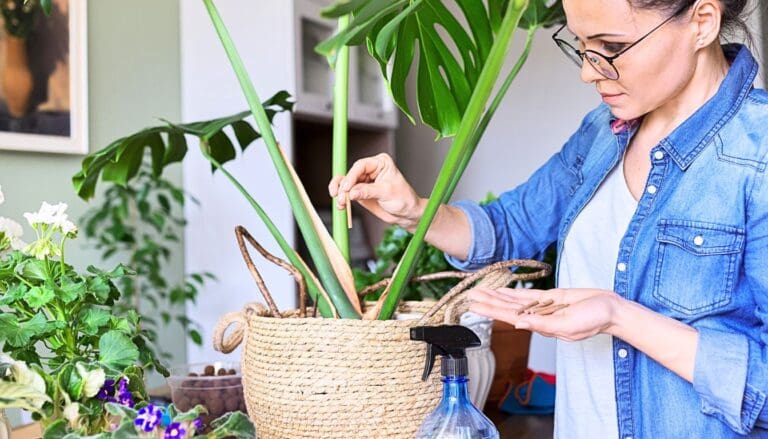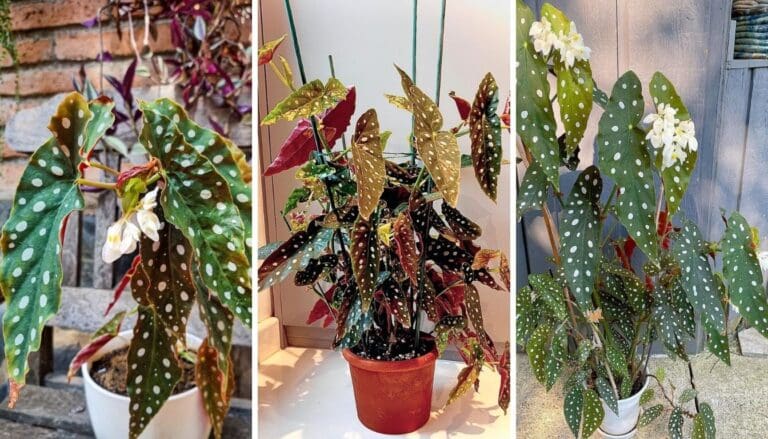Why Shouldn’t You Rely Solely on Fertilizer Sticks?
Imagine you’ve just discovered the convenience of fertilizer sticks for your houseplants. I mean, just poke them into the soil and forget about it, right? ✌️
Well, as handy as these little nutrient-packed sticks might seem, relying solely on them to feed your green friends might not be the best game plan.
Fertilizer sticks are like the snack bars of the plant world – a quick fix, but not a complete meal. They can be great in a pinch or for a lazy day, but your plants, just like you, need a balanced diet to thrive. 🌿
Have you ever wondered if your leafy pals might be missing out on something?
Let’s chat about why your houseplants crave variety and why a one-stick-fits-all approach might leave them craving more.
Share your thoughts down below – what’s your go-to method for feeding your plant babies? 🌱💬

Please note: Simplify Plants is reader-supported. Some links in the post are affiliate links and I get a commission from purchases made through links in the post.
Understanding Fertilizer Sticks
Have you ever wondered what those little sticks you poke into your plant’s soil are all about? Well, let me share the scoop on fertilizer sticks. They’re kind of like a quick snack for your plants! 😋
- What They Are: The sticks are compacted with nutrients and meant to be inserted into the soil.
- Nitrogen Content: They usually have more nitrogen, which is like the green smoothie for your plants – essential for lush leaves. 🍃
Now, here’s how they work. You pop a stick into the soil, and it slowly releases nutrients over time. It’s super convenient, but not all-you-can-eat buffet. Imagine only eating snacks and never having a proper meal, plants feel that way too!
Frequency: They last a while, but your plant pals may need more regular meals to thrive. It’s like using those slow-cooker recipes; set it and forget it, but don’t neglect it.
So why not just use these sticks all the time? Well, they’re great in a pinch but don’t always cover the complete dietary spectrum. I mean, you wouldn’t eat only protein bars every day, right?
Remember, happy plants = happy plant parent. And we want those thumbs to stay green, don’t we? 🌱
Got any fertilizer stick stories to share? Drop them in the comments – I’d love to hear if they stick the landing or if it’s more of a sticky situation for you! #PlantTalk
Limitations of Fertilizer Sticks

Let’s chat about why sticking to only fertilizer sticks might leave your beloved plants craving more. 🌱
Nutrient Distribution Issues
Fertilizer sticks can be super convenient, but do they spread the love evenly? Not quite.
I’ve noticed that they tend to release nutrients just around where they’re inserted, which might not reach all the roots.
It’s like throwing a party and only serving snacks in one corner – not everyone gets a bite!
Risk of Over-Fertilization
Using these sticks can be a bit of a guessing game. Insert too many, and you might overload your plants with nutrients, which is a real party foul. It’s like pouring way too much hot sauce on your taco – suddenly, you’re in trouble. 🌶️
Lack of Nutritional Diversity
Plants thrive with a varied diet, much like us! Fertilizer sticks typically offer a limited menu, missing out on some essential nutrients.
It’s like only eating pizza every day; delicious, but you’ll miss out on important food groups. Think about it, would you want pizza for breakfast, lunch, and dinner? (Okay, maybe just for a day…)
Health of Soil Ecosystem
When I think about feeding our beloved leafy friends, it’s tempting to just stick a fertilizer spike in the pot and call it a day, right? 🌿 But hang on a sec! Let’s chat about what’s going on under the surface.
Impact on Soil Microorganisms
So, what happens to those tiny, invisible-to-the-eye critters when we introduce fertilizer sticks? They’re kind of a big deal. Soil microorganisms are superstars in cycling nutrients and supporting plant growth.
They’re like the underground workforce in a bustling city. But when we overdo it with fertilizer sticks, we risk upsetting the balance.
It’s a bit like throwing a surprise rock concert in the middle of their 9-to-5 routine – some might enjoy the change, but many will find it hard to cope!
- Negatives:
- Reduced microbial diversity
- Possible harmful byproducts
Soil Structure Alteration
And let’s talk about the very ground our houseplants call home — the soil structure. Just like you enjoy stretching out on a comfy couch, roots love to roam through well-aerated and structured soil.
Fertilizer sticks can sometimes be the equivalent of us sitting in one spot on the sofa forever… Sounds comfy but not great for circulation, right? 😅 We don’t want that for our plant’s roots. They need room to breathe and meander.
- Changes to look out for:
- Compaction around the fertilization site
- Uneven distribution of nutrients
Hey, have you noticed any of these changes in your own potted garden? Let’s swap stories in the comments. And if you’ve got a minute, give this a share so we can all become better plant parents together! 🌱✨
Plant Growth and Development

Ever wondered if your green buddies are getting all they need from those sticks you poke in the soil? Let’s zoom in on how they affect our plant pals!
Influence on Root Growth
Fertilizer sticks might feel like a quick fix, they can limit root expansion. Roots tend to grow towards nutrient sources, so if nutrients are all centered around a stick, why would they roam? 🧐
This can lead to a compacted root system. Imagine wearing shoes two sizes too small – that’s how your plants feel with cramped roots!
Effects on Overall Plant Health
Healthy roots equal happy plants! 🌱 Fertilizer sticks can cause uneven nutrient distribution, which might leave some parts of your plant feeling a bit hangry.
Also, too much of a good thing (aka nutrients) right at the center can result in nutrient burn – think tummy burn but for plants. We want our leafy friends to thrive, not just survive, right?
Ever caught your plant trying to sneak into the next pot for more goodies? Share your funny stories below! And if this made you pause and think, why not give this a share? Your fellow plant lovers might thank you!
Practical Considerations
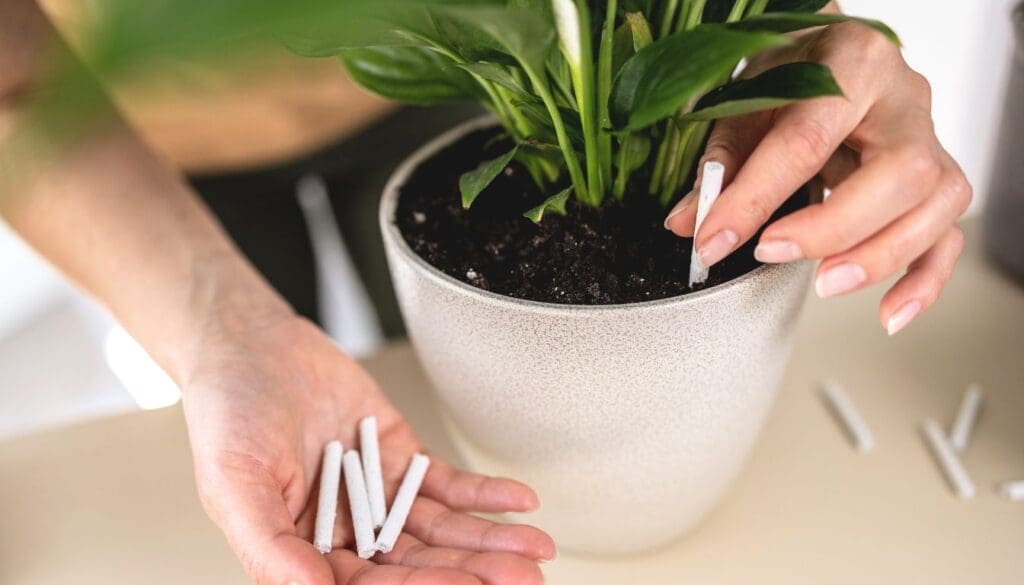
When it comes to nurturing our green friends, fertilizer sticks might seem like a dream come true due to their convenience, but there are a couple of practical aspects we should chat about.
Ease of Use and Convenience
I’ve got to admit, sticking a fertilizer stick into the pot and calling it a day is as simple as it gets. You don’t need to mark your calendar or set reminders for the next feeding – just poke and go 🌱.
It’s like the plant version of a slow cooker meal: set it and forget it! But, have you ever wondered if one-size-fits-all really works out in the garden?
Long-Term Cost Implications
When it comes to our wallets, long-term costs can sneak up on us like a ninja in a tulip field.
Sure, buying a pack of fertilizer sticks might not seem like a big deal initially, but unlike powdered or liquid fertilizers, you may find yourself running out quicker than expected. Have you checked the price difference lately? It’s worth a peek – just saying 💸.
Alternatives to Fertilizer Sticks
Ever feel like your houseplants are stuck in a rut with fertilizer sticks? I’ve got some amazing alternatives for you to try out!
Liquid Fertilizers
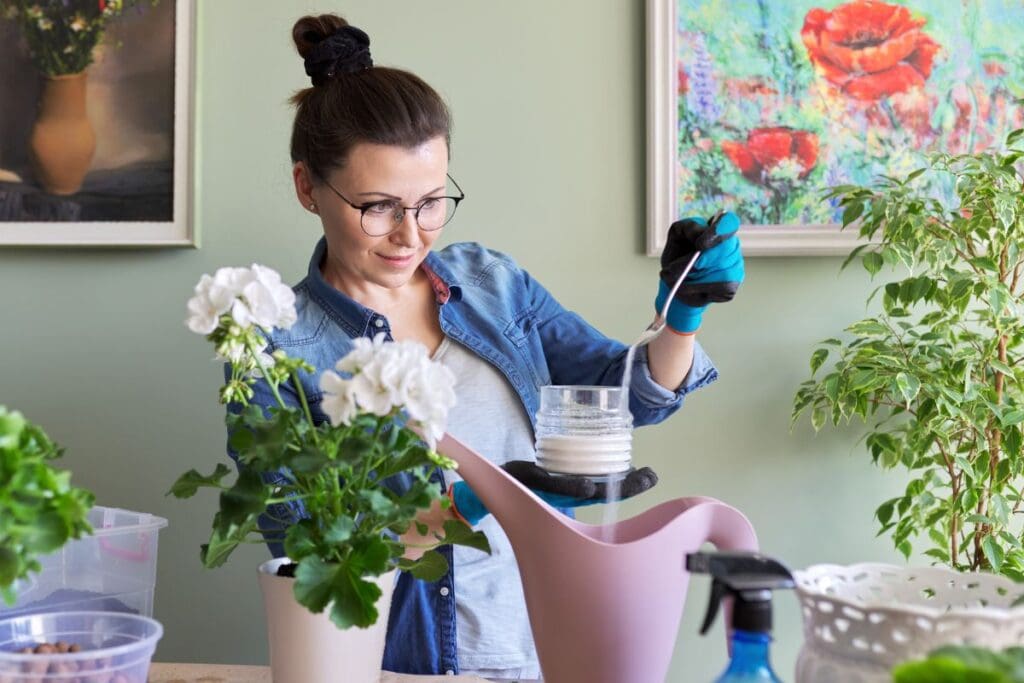
Liquid fertilizers are a game-changer for your leafy friends. They’re easy to apply—just mix with water and voilà! 💧 You can adjust the dilution to suit the needs of each plant, giving them a customized meal that’s just right.
- Directly available nutrients: Plants take up liquid nutrients quickly.
- Customizable feeding schedules: Tailor feeding to your plant’s growth stage.
Granular Fertilizers
Long-lasting nutrition is the name of the game with granular fertilizers. You sprinkle them on the soil and let them work their slow-release magic.
- Slow-release: Nutrients are released over time, for sustained feeding.
- Versatile application: Use during potting or sprinkle on topsoil.
Organic and Natural Options
Natural options are the superheroes of the plant world! They not only nourish your plants but also enrich the soil with organic matter. 🍂 Think banana peels for potassium or bone meal for that lush growth!
- Eco-friendly: Reduce chemical use and work with nature.
- Soil health: Support beneficial microorganisms in the soil.
Who’s ready to ditch the sticks and give these alternatives a spin? Which one are you excited to try first? Share your experiences and let’s get our plants thriving! 🌿 Don’t forget to hit that share button and spread the plant love!
Best Practices in Houseplant Care
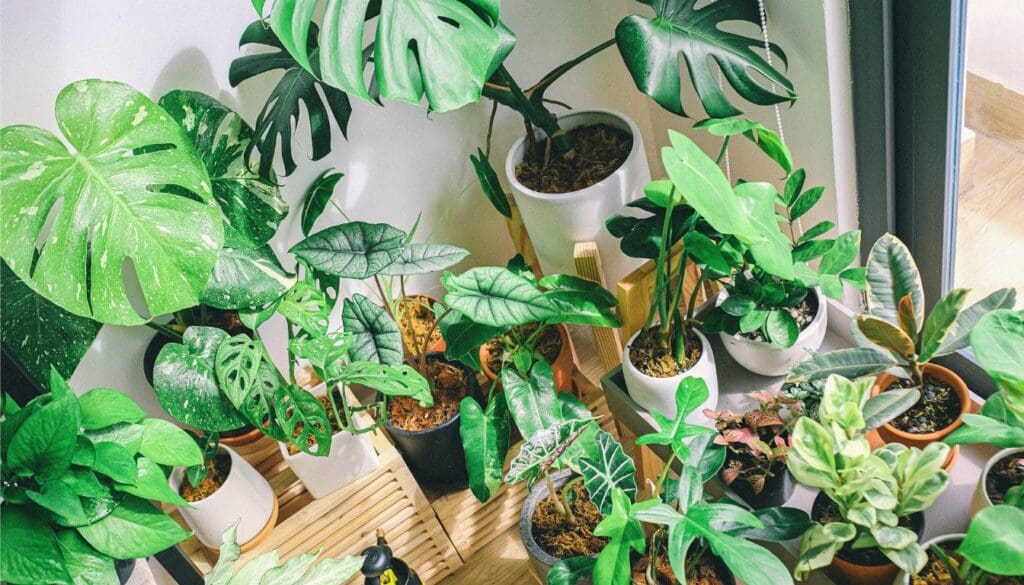
When it comes to keeping your leafy buddies healthy, it’s all about the TLC! I’m talking Regular Monitoring, Soil Testing, and a Balanced Feeding Schedule.
Regular Monitoring
I just can’t stress enough how important it is to keep a close eye on your green pals. Watch for droopy leaves, dry soil, and any signs that they’re not feeling their best.
Remember, plants can’t speak, but they sure can show! 🌿 Are your plants looking a bit thirsty today?
Soil Testing
Before you feed, know what’s needed! I like to do a routine soil check to make sure my plants are getting what they need.
Each plant has its soil preference, and getting it right makes a world of difference. Have you tested your plant soil lately? It’s like a mini check-up for your plant’s home!
Balanced Feeding Schedule
Throwing fertilizer sticks at your plants and hoping for the best? Nope, not on my watch!
Instead, I swear by a balanced diet for my leafy friends. A mix of liquid, granular, or organic fertilizers at the right time keeps my plants happy.
And guess what? No overfeeding here, just like you wouldn’t overdo it with pizza, right? 🍕 (Even though it’s tempting!)
FAQs
Why can’t I just stick to fertilizer sticks for my plants? 🌱
I know, I know, poking a stick into soil seems like a no-brainer for plant feeding, but here’s the root of the problem: fertilizer sticks can be a bit one-note.
They’re like that one hit wonder on your playlist – good for a moment, but not enough to keep your plants jamming long term.
Are fertilizer sticks bad for my plants?
Not at all! But they’re a bit like snacks rather than a full meal. 😉
They release nutrients slowly, which is great, but this can lead to uneven feeding. Imagine only finishing half your lunch – it’s the same deal for your leafy pals.
How often should I use them then? Strike a balance – using them occasionally is fine, especially during the growing season.
But mix it up with liquid fertilizers or granular products to keep your green friends from going hungry.
Any tips for using them wisely? Absolutely! When placing a fertilizer stick, don’t just plonk it next to the plant’s stem.
Give it space by pressing it into the soil near the edge of the container. Think of it like surround sound for your plants – they love to absorb from all around!
Conclusion
So, I’ve been chatting about fertilizer sticks, and while I’m a big fan of anything that makes my life easier, I’ve got to say, relying solely on these sticks isn’t the way to go for our green buddies at home.
Why, you ask? Well, variety is the spice of life! 🌿 Just like we wouldn’t want to eat the same meal every day (I mean, pizza is great, but every day?), our leafy friends need a diverse diet.
Fertilizer sticks do have their perks – they’re convenient, and they slowly release nutrients. But they can’t always cover the comprehensive nutritional needs of different plants.
We’ve got to remember that liquid and granular fertilizers join the dance by feeding our plants in a more evenly distributed way and giving us control over the quantity and frequency of feeding. 🌱💦
Here’s a quick checklist before I sign off:
- I’m using a mix of fertilizers based on my plants’ needs – check!
- I’m not overfeeding them (more isn’t always better!) – check!
- I’m having a blast watching my plants grow and thrive – super check!
What’s your go-to method for feeding your houseplant crew? Drop a comment and let’s swap tips!
And if you found this insight on plant care as enlightening as discovering a new favorite plant shop, don’t hesitate to share with your fellow plant parents! 🌼👩🌾👨🌾
Recommended Garden Supplies
| Product Image | Our Recommended Gardening Supplies | Check Offers! |
|---|---|---|
Top Top
Top
Top
Top
Top
Top
Top
Top | rePotme Houseplant and Tropical Classic Potting Soil Mix | Check Offer On Amazon |
 Top
Top
Top
Top
Top
Top
Top
Top | Espoma Organic Indoor Plant Food | Check Offer On Amazon |
 Top
Top
Top
Top
Top
Top
Top
Top | GooingTop LED Grow Light 6000K Full Spectrum Clip Plant Growing Lamp | Check Offer On Amazon |
 Top
Top
Top
Top
Top
Top
Top
Top | Soil Moisture Meter | Check Offer On Amazon |
 Top
Top
Top
Top
Top
Top
Top
Top | Govee Hygrometer Thermometer, Bluetooth Enabled! | Check Offer On Amazon |
 Top
Top | LEVOIT Humidifiers for Large Room(Best For Plants) | Check Offer On Amazon |
 Top
Top
Top
Top
Top
Top
Top
Top | Upgraded DIY Automatic Drip Irrigation Kit, 15 Potted Houseplants Support | Check Offer On Amazon |
 Top
Top
Top
Top
Top
Top
Top
Top | Stainless Steel Heavy Duty Gardening Tool Set | Check Offer On Amazon |
 Top
Top
Top
Top
Top
Top
Top
Top | Bonide Insecticidal Soap | Check Offer On Amazon |
 Top
Top
Top
Top
Top
Top
Top
Top | Bonide 32 oz Spray Neem Oil for Organic Gardening | Check Offer On Amazon |
 Top
Top
Top
Top
Top
Top
Top
Top | Garden Safe Fungicide | Check Offer On Amazon |

